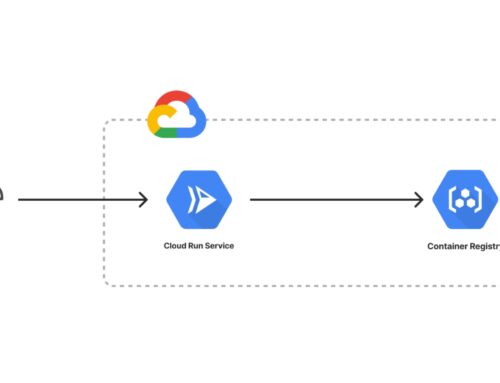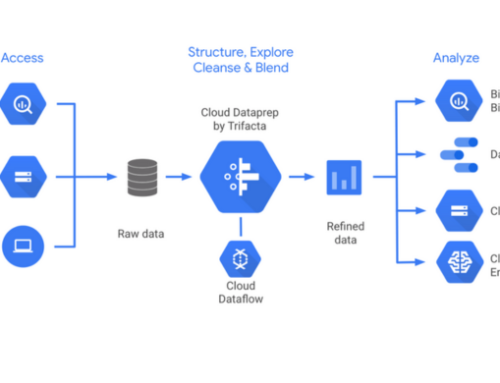Introduction to GCP cloud Storage Transfer Service
Google Cloud Storage Transfer Service stands as a powerful and versatile solution within the Google Cloud Platform’s suite of services, offering seamless data transfer and migration capabilities. At its core, the Cloud Storage Transfer Service is designed to simplify and automate the process of moving data to and from Google Cloud Storage.
Definition of Cloud Storage Transfer Service:
In essence, the Cloud Storage Transfer Service is a managed service that facilitates the movement of large volumes of data between various sources and Google Cloud Storage. It eliminates the need for manual intervention in complex data transfer tasks, streamlining the process and ensuring efficiency.
Overview of its Role in Data Transfer and Migration:
The primary role of the Cloud Storage Transfer Service is to act as a conduit for data transfer, whether it be from on-premises environments, other cloud providers, or within the Google Cloud ecosystem itself. This encompasses a spectrum of scenarios, including data migration from legacy systems to the cloud, periodic backups, and large-scale ingestion of data for analytics purposes. The service is adept at handling diverse data transfer requirements, making it a valuable tool for organizations with varying data management needs.
Significance in the Context of Cloud Storage Management:
In the dynamic landscape of cloud storage management, where organizations grapple with vast amounts of data distributed across different environments, the Cloud Storage Transfer Service emerges as a strategic asset. Its significance lies in its ability to provide a unified, automated, and reliable solution for managing data movement. Whether orchestrating data transfers on a scheduled basis, implementing periodic backups, or executing one-time migrations, the service ensures a seamless and controlled flow of data.
For businesses operating in the cloud, efficient data transfer is not merely a convenience but a critical component of effective storage management. The Cloud Storage Transfer Service addresses this need comprehensively, aligning with Google Cloud’s commitment to simplifying complex processes. As we delve deeper into its features, use cases, and best practices, a clearer picture will emerge of how this service becomes an integral part of an organization’s data strategy, enabling them to harness the full potential of Google Cloud Storage with ease and efficiency.
Key Features of Cloud Storage Transfer Service
The Google Cloud Storage Transfer Service is distinguished by a robust set of features that collectively simplify and enhance the efficiency of data transfer and migration processes. These features not only streamline complex tasks but also contribute to a more controlled, secure, and manageable data environment within Google Cloud Storage.
Managed Service Benefits:
At the core of the Cloud Storage Transfer Service is its status as a managed service, which brings forth a range of benefits. The managed service model eliminates the need for users to handle the underlying infrastructure, updates, and maintenance. This translates to a more user-friendly experience, allowing organizations to focus on defining and executing their data transfer tasks without being burdened by operational complexities. The managed nature ensures a reliable and scalable environment, promoting a hassle-free approach to large-scale data transfers.
Support for Various Data Sources:
One of the strengths of the Cloud Storage Transfer Service is its versatility in supporting a wide array of data sources. This includes transfers from on-premises data centers, other cloud providers, and even within the Google Cloud ecosystem. Organizations can seamlessly migrate data from existing storage solutions, irrespective of the source, ensuring a smooth transition to Google Cloud Storage. This flexibility is pivotal for businesses with diverse data storage environments and facilitates a unified approach to data management.
Advanced Scheduling and Automation:
The ability to schedule and automate data transfers is a key feature that distinguishes the Cloud Storage Transfer Service. Users can define precise schedules for their transfer jobs, ensuring that data moves at optimal times to minimize impact on other operations. Automation is particularly beneficial for recurring tasks, such as daily backups or periodic migrations, where predefined schedules reduce manual intervention and enhance overall operational efficiency.
Bandwidth Management and Optimization:
Effective bandwidth management is crucial for optimizing data transfer processes, especially when dealing with large datasets. The Cloud Storage Transfer Service offers bandwidth management features that allow users to control the rate at which data is transferred. This ensures that the available network resources are utilized efficiently without causing disruptions to other critical operations. Bandwidth optimization is particularly valuable in scenarios where network resources are shared among various processes or in environments with varying levels of network congestion.
Logging and Monitoring Capabilities:
The ability to monitor and track the progress of data transfers is vital for ensuring the integrity and success of these operations. Cloud Storage Transfer Service provides robust logging and monitoring capabilities, offering detailed insights into transfer jobs. Users can access logs that provide information on transfer status, errors, and other relevant metrics. This transparency facilitates proactive troubleshooting and ensures that organizations have a clear understanding of the performance and outcomes of their data transfer tasks.
In essence, the key features of the Cloud Storage Transfer Service collectively contribute to a user-friendly, flexible, and efficient data transfer experience. These features cater to the diverse needs of organizations, allowing them to seamlessly migrate data, schedule recurring transfers, optimize bandwidth usage, and gain valuable insights through comprehensive logging and monitoring capabilities. As we explore these features in more detail, a deeper understanding of their practical applications and benefits will emerge.
How to Set Up and Configure Cloud Storage Transfer Service
Setting up and configuring the Google Cloud Storage Transfer Service is a straightforward process that empowers users to define and execute data transfer tasks with precision. The following steps guide users through the setup and configuration, ensuring a seamless experience from initiation to the completion of transfer jobs.
Accessing the Service in the GCP Console:
- Navigate to the GCP Console:
Begin by logging into the Google Cloud Platform (GCP) Console using valid credentials.
- Locate the Cloud Storage Transfer Service:
In the GCP Console, access the Cloud Storage Transfer Service. This can be found in the navigation menu under “Storage.”
- Access Transfer Service Dashboard:
Once in the Cloud Storage Transfer Service section, users can access the dashboard, which provides an overview of existing transfer jobs and options to create new ones.
Defining Transfer Jobs:
- Create a New Transfer Job:
On the dashboard, users can initiate the process of creating a new transfer job. This involves specifying the source and destination locations for the data transfer.
- Configure Transfer Source:
Define the source of the data, which can be an on-premises location, another cloud storage provider, or an existing Google Cloud Storage bucket.
- Specify Transfer Destination:
Set the destination for the data transfer, specifying the target Google Cloud Storage bucket where the data will be moved.
- Define Transfer Options and Filters:
Configure additional options such as transfer mode (copy, move, or sync), include/exclude filters, and data transfer conditions. These options provide fine-grained control over the transfer process.
Configuring Transfer Options and Filters:
- Transfer Mode:
Choose the appropriate transfer mode based on the desired outcome. Options include copying data, moving it, or synchronizing data between source and destination.
- Include/Exclude Filters:
Apply filters to include or exclude specific files or directories during the transfer. This helps tailor the process to meet specific requirements.
- Transfer Conditions:
Set conditions for the transfer, such as only transferring files modified within a certain timeframe. This adds flexibility to the transfer job based on time-based or attribute-based criteria.
Scheduling and Automating Transfers:
- Define Transfer Schedule:
Schedule the transfer job based on specific dates and times. This feature is particularly useful for recurring tasks such as daily or weekly backups.
- Automate Through API:
For users who prefer programmatic control, the Cloud Storage Transfer Service can be accessed and managed through APIs, allowing for automation and integration into existing workflows.
Managing and Monitoring Transfer Jobs:
- Monitor Transfer Job Progress:
The GCP Console provides a dedicated section to monitor the progress of transfer jobs. Users can access detailed logs, track status, and identify any issues that may arise during the transfer process.
- View Transfer History:
The service maintains a comprehensive history of transfer jobs, enabling users to review past activities, track changes, and assess overall performance.
- Manage Multiple Jobs:
For organizations dealing with multiple transfer jobs, the console allows efficient management of each job individually. This includes pausing, resuming, or modifying existing jobs as needed.
In summary, setting up and configuring the Google Cloud Storage Transfer Service involves a user-friendly process through the GCP Console. By defining transfer jobs, configuring options, and leveraging scheduling features, users can tailor the service to meet specific data transfer requirements. The service’s monitoring and management capabilities provide transparency and control, ensuring a seamless and controlled data transfer experience. As organizations become more familiar with these steps, they can harness the full potential of the Cloud Storage Transfer Service for their data management needs.
Comparison with Other Data Transfer Tools
The landscape of data transfer tools within the Google Cloud Platform (GCP) is diverse, catering to different use cases and preferences. Comparing the Google Cloud Storage Transfer Service with tools like gsutil and the Transfer Appliance provides insights into the unique strengths and limitations of each, helping organizations make informed decisions based on their specific data transfer requirements.
Comparison with gsutil:
Key Differentiators:
- Managed Service vs. Command-Line Tool: One of the primary differentiators is the managed service nature of the Cloud Storage Transfer Service compared to the command-line tool gsutil. While gsutil provides granular control through the command line, the Transfer Service offers a user-friendly, automated approach suitable for those who prefer a managed service.
- Ease of Use and Automation: The Cloud Storage Transfer Service excels in ease of use and automation. It allows users to define transfer jobs through a graphical interface, set up schedules, and automate transfers, making it more accessible for those less familiar with command-line interfaces.
Advantages:
- Managed Service Benefits: The Cloud Storage Transfer Service’s managed service model eliminates the need for users to manage infrastructure, updates, and maintenance. This results in a more streamlined and user-friendly experience compared to the manual management required with gsutil.
- Simplified Job Configuration: Setting up transfer jobs through the GCP Console provides a simplified and guided approach, allowing users to define source and destination, configure options, and schedule transfers with ease.
Comparison with Transfer Appliance:
Key Differentiators:
- Physical Appliance vs. Cloud-based Service: The Transfer Appliance distinguishes itself as a physical device that organizations can use to transfer large volumes of data when internet-based transfers are impractical. In contrast, the Cloud Storage Transfer Service is a cloud-based service.
- Use Case Scope: The Transfer Appliance is well-suited for scenarios where organizations need to transfer terabytes or petabytes of data and shipping a physical device is a viable option. The Cloud Storage Transfer Service is more versatile and caters to a broader range of use cases, including regular, scheduled transfers and migrations between cloud environments.
Advantages:
- Scalability: For massive data transfers, the Transfer Appliance offers scalability by allowing organizations to use multiple appliances simultaneously. This can be advantageous for projects involving extremely large datasets.
- Offline Data Transfer: The Transfer Appliance addresses scenarios where offline data transfer is a necessity due to limited or unreliable internet connectivity. It provides a practical solution for organizations with stringent security or regulatory requirements.
Limitations:
- Physical Logistics: The Transfer Appliance’s reliance on physical shipping introduces a time delay in data transfers, making it less suitable for urgent or time-sensitive scenarios compared to online transfer services like the Cloud Storage Transfer Service.
Use Case Scenarios for Different Tools:
- Cloud Storage Transfer Service:
- Ideal for regular, scheduled transfers and migrations between cloud environments.
- Well-suited for users who prefer a managed service approach and automation through a graphical interface.
- gsutil:
- Suited for users who prefer command-line interfaces and granular control over data transfer tasks.
- Appropriate for one-time transfers or scenarios where real-time command and control are essential.
- Transfer Appliance:
- Effective for massive data transfers involving terabytes or petabytes of data.
- Practical for offline data transfer scenarios where shipping a physical device is feasible.
In conclusion, the choice between the Cloud Storage Transfer Service, gsutil, and the Transfer Appliance hinges on specific use case requirements, user preferences, and the scale of data transfer. While the Cloud Storage Transfer Service excels in ease of use and automation, gsutil offers fine-grained control through command-line interfaces, and the Transfer Appliance addresses scenarios requiring large-scale, offline data transfer. Understanding the unique features and strengths of each tool empowers organizations to select the most fitting solution for their data transfer needs within the Google Cloud Platform.
Security Considerations and Best Practices
Ensuring the security of data during transfers is paramount, especially in cloud environments where data traverses networks and storage systems. The Google Cloud Storage Transfer Service provides a robust set of security features, coupled with best practices, to safeguard data throughout the transfer process.
Encryption in Transit and at Rest:
- Transport Layer Security (TLS):
The Cloud Storage Transfer Service employs Transport Layer Security (TLS) to encrypt data during transit. This ensures that data is securely transmitted over the network, protecting it from interception or unauthorized access.
- Server-Side Encryption (SSE):
For data at rest within Google Cloud Storage, the service supports Server-Side Encryption. This means that data stored in Cloud Storage buckets is automatically encrypted, adding an extra layer of protection to sensitive information.
Identity and Access Management (IAM) Controls:
- Fine-Grained Access Controls:
Google Cloud Storage Transfer Service integrates with Google Cloud’s Identity and Access Management (IAM) controls. This allows organizations to define fine-grained access policies, specifying which users or processes have permission to initiate, manage, or monitor transfer jobs.
- Principle of Least Privilege:
One of the best practices is to follow the least privilege principle.By granting only the necessary permissions to entities involved in data transfer, organizations reduce the risk of unintended access or misuse.
Auditing and Logging for Security Compliance:
- Cloud Audit Logging:
The service integrates with Cloud Audit Logging, providing detailed logs of user activity. These logs include information about transfer job creation, modifications, and completion. Organizations can leverage these logs for security analysis, compliance reporting, and auditing purposes.
- Monitoring Transfer Jobs:
Regularly monitoring the progress of transfer jobs is essential for identifying any irregularities or unauthorized activities. The detailed insights provided by the Cloud Storage Transfer Service’s monitoring capabilities enable organizations to maintain a proactive stance in ensuring security.
Best Practices for Secure Data Transfer:
- Use Encrypted Protocols:
Whenever possible, configure the transfer service to use encrypted protocols. This adds an extra layer of security to data during transit, protecting it from potential eavesdropping or man-in-the-middle attacks.
- Regularly Update Access Controls:
Regularly review and update access controls to reflect changes in organizational roles, responsibilities, or personnel. This ensures that only authorized individuals or processes have access to the transfer service and associated data.
Integration with Google Cloud Security Tools:
- Cloud Security Command Center:
Integrate the Cloud Storage Transfer Service with Google Cloud Security Command Center for a centralized view of security-related insights. This facilitates a holistic approach to security monitoring and compliance management.
- Cloud Security Scanner:
Leverage tools like the Cloud Security Scanner to identify and address potential security vulnerabilities within the transfer service configuration. Regular scanning helps organizations stay proactive in enhancing their security posture.
In conclusion, the Google Cloud Storage Transfer Service prioritizes security through robust encryption measures, IAM controls, and comprehensive auditing capabilities. Adhering to best practices, such as using encrypted protocols, regularly updating access controls, and integrating with Google Cloud’s security tools, further enhances the security posture of data transfers. By following these security considerations and best practices, organizations can confidently utilize the Cloud Storage Transfer Service while maintaining the confidentiality, integrity, and availability of their data throughout the transfer process.
Future Developments and Roadmap
As organizations continue to evolve in their cloud journey, Google Cloud Storage Transfer Service remains committed to adapting and innovating to meet the dynamic needs of users. The future developments and roadmap of the service promise exciting enhancements and features, demonstrating Google Cloud’s dedication to providing a cutting-edge and user-friendly experience.
Exploring Potential Enhancements and Features:
- Advanced Transfer Options:
Anticipate the introduction of advanced transfer options to provide users with more granular control over their transfer jobs. This may include additional filtering capabilities, transfer conditions, and data transformation features.
- Enhanced Monitoring and Reporting:
Expect improvements in monitoring and reporting functionalities, allowing users to gain deeper insights into transfer job performance, troubleshoot issues more effectively, and generate comprehensive reports for auditing and analysis.
- Integration with Additional Services:
The future may see expanded integration with other Google Cloud services, enhancing the interoperability of the Cloud Storage Transfer Service within broader cloud workflows. This could include tighter integration with data processing or analytics services.
Google Cloud’s Commitment to Service Updates:
- Regular Feature Updates:
Google Cloud is known for its commitment to regular feature updates and service improvements. Users can anticipate a cadence of updates that introduce new functionalities, address user feedback, and align the service with evolving industry standards.
- Security and Compliance Enhancements:
Given the importance of security in data transfer, future developments may focus on introducing additional security and compliance enhancements. This could include expanded encryption options, stricter access controls, and features to facilitate compliance with regulatory frameworks.
Community Feedback and Contributions:
- Open Dialogue with Users:
Google Cloud values community feedback and actively engages with users to understand their experiences, challenges, and aspirations with the Cloud Storage Transfer Service. Future developments are likely to be influenced by the insights gathered from this open dialogue.
- Community-Driven Enhancements:
Community contributions play a significant role in shaping the roadmap. Google Cloud encourages users to contribute to the service’s development, fostering a collaborative environment where diverse perspectives contribute to the evolution of the Cloud Storage Transfer Service.
Implications of Future Developments on Users:
- Improved User Experience:
Users can look forward to an improved and more intuitive user experience as the service evolves. Future developments may focus on refining the interface, simplifying workflows, and providing clearer documentation to enhance usability.
- Increased Efficiency and Flexibility:
The introduction of new features and enhancements is expected to increase the efficiency and flexibility of the Cloud Storage Transfer Service. Users can anticipate tools and options that streamline their data transfer processes, making it even more adaptable to diverse use cases.
- Alignment with Industry Trends:
Future developments are likely to align the Cloud Storage Transfer Service with emerging industry trends, ensuring that users can leverage the latest technologies and methodologies in their data transfer workflows.
In conclusion, the future developments and roadmap of the Google Cloud Storage Transfer Service are poised to bring about significant improvements, ensuring that the service remains a forefront choice for organizations seeking efficient, secure, and scalable data transfer solutions within the Google Cloud Platform. Users can expect a continued commitment to innovation, responsiveness to user feedback, and a collaborative approach that empowers them to navigate the evolving landscape of cloud data management.
Future Outlook
In contemplating the future of data management within the Google Cloud Platform, the comprehensive discussion on the Google Cloud Storage Transfer Service provides valuable insights into its pivotal role. As we recap key highlights, it’s evident that the service stands as a linchpin in simplifying complex data transfer and storage operations.
The Cloud Storage Transfer Service’s managed nature, robust security features, and versatility in accommodating various use cases underscore its significance. From scheduled transfers to large-scale migrations, the service streamlines tasks, allowing organizations to navigate the intricacies of data management with ease.
Looking ahead, the future outlook for the Cloud Storage Transfer Service is promising. With potential enhancements and features on the horizon, users can anticipate an even more user-friendly and efficient experience. Google Cloud’s commitment to regular updates, openness to community contributions, and alignment with industry trends position the service as a dynamic solution for evolving data management needs.
As we encourage readers to explore and implement the Cloud Storage Transfer Service, we envision a future where organizations harness the full potential of cloud data management. By adopting this service, users can not only meet their current data transfer requirements but also stay ahead in the ever-evolving landscape of cloud infrastructure, ensuring a seamless and efficient journey in managing their valuable data.
Conclusion
In conclusion, the Google Cloud Storage Transfer Service emerges as a cornerstone solution within the dynamic realm of cloud data management. Through our exploration, we’ve unveiled its robust features, highlighted use cases, addressed security considerations, and envisioned future developments. This service not only simplifies the complexities of data transfer but also exemplifies Google Cloud’s commitment to providing cutting-edge, user-friendly tools.
As organizations increasingly embrace cloud technologies, the Cloud Storage Transfer Service proves to be a strategic asset, streamlining workflows, enhancing security, and fostering operational efficiency. Its versatility, scalability, and integration with Google Cloud’s ecosystem position it as a catalyst for innovation in data management.
Looking forward, the future of the Cloud Storage Transfer Service holds promises of continual enhancements, aligning with industry trends and user needs. We encourage readers to delve into this powerful tool, explore its capabilities, and leverage its potential for efficient data transfers and storage operations within the Google Cloud Platform. In doing so, organizations can not only meet their immediate data management demands but also future-proof their strategies in the dynamic landscape of cloud computing.









